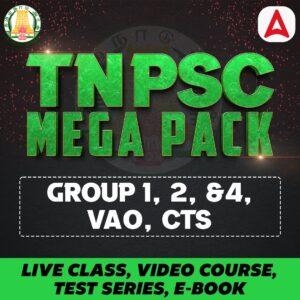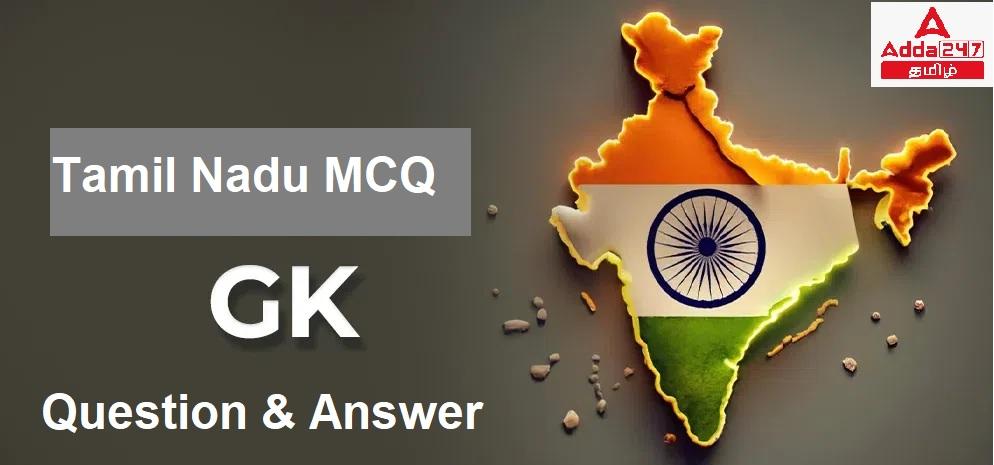பல்வேறு போட்டித் தேர்வுகளில் புவியியல் முக்கியப் பங்காற்றுகிறது, விண்ணப்பதாரர்களுக்கு அவர்களின் தயாரிப்பில் உதவ, நாங்கள் MCQs தொகுத்துள்ளோம். உங்கள் அறிவை மேம்படுத்துவதற்கும், வரவிருக்கும் தேர்வுகளுக்கு உங்களை சிறப்பாக தயார்படுத்துவதற்கும் ஒவ்வொரு கேள்விக்கும் சரியான பதில் உள்ளது.
MCQs
Q1. யுரேனஸ் பற்றிய பின்வரும் கூற்றுகளில் எது சரியானது?
1.யுரேனஸ் வீனஸைப் போலவே கிழக்கிலிருந்து மேற்காக அதன் அச்சில் சுழல்கிறது.
2.டைட்டானியா மிகப்பெரிய இயற்கை செயற்கைக்கோள் ஆகும்.
(a) 1 மட்டும்
(b) 2 மட்டும்
(c) 1 மற்றும் 2 இரண்டும்
(d) மேலே எதுவும் இல்லை
S1. Ans. (c) 1 மற்றும் 2 இரண்டும்
Sol.
- 1781 இல் வில்லியம் ஹெர்ஷலால் கண்டுபிடிக்கப்பட்ட சூரியனில் இருந்து ஏழாவது கிரகம் “சோமர்சால்டிங் பிளானட்” என்று அழைக்கப்படும் யுரேனஸ் ஆகும்.
- மீத்தேன் வாயு இருப்பதால் அதன் தனித்துவமான பச்சைத் தோற்றம் ஏற்படுகிறது, மேலும் அதன் அதிக சாய்ந்த அச்சு சூரியனைச் சுற்றி வரும்போது உருளும் இயக்கத்தை அளிக்கிறது.
- 27 இயற்கை செயற்கைக் கோள்களுடன், மிகப்பெரிய சந்திரன் டைட்டானியா உட்பட, பெரும்பாலான கிரகங்களைப் போலல்லாமல், யுரேனஸ் வீனஸைப் போலவே கிழக்கிலிருந்து மேற்காக அதன் அச்சில் சுழல்கிறது.
Q2. சிறுகோள்கள் காணப்படும் பகுதி எது?
(a) பூமி மற்றும் செவ்வாய் இடையே
(b) செவ்வாய் மற்றும் வியாழன் இடையே
(c) வியாழன் மற்றும் சனி இடையே
(d) சனி மற்றும் யுரேனஸ் இடையே
S2. Ans. (b) செவ்வாய் மற்றும் வியாழன் இடையே.
Sol.சிறுகோள்கள் சூரியனைச் சுற்றி நகரும் சிறிய திடப் பொருள்கள் மற்றும் அவை செவ்வாய் மற்றும் வியாழன் சுற்றுப்பாதைகளுக்கு இடையில் அமைந்துள்ள சிறுகோள் பட்டை எனப்படும். அவை கோள்களாகக் கருதப்பட முடியாத அளவுக்கு சிறியவை, மேலும் அவை சிறு கோள்கள் அல்லது சிறிய கிரகங்கள் என்றும் அழைக்கப்படுகின்றன.
Q3. 2008 இல் இஸ்ரோவால் தொடங்கப்பட்ட இந்தியாவின் முதல் நிலவு பயணத்தின் பெயர் என்ன?
(a) சந்திரயான் – 1
(b) மார்ஸ் ஆர்பிட்டர் மிஷன்
(c) மங்கள்யான்
(d) சந்திரயான் – 2
S3. Ans. (a) சந்திரயான் – 1.
Sol.
இஸ்ரோ (இந்திய விண்வெளி ஆராய்ச்சி நிறுவனம்) 2008 இல் சந்திரயான் – 1 என்ற இந்தியாவின் முதல் நிலவு பயணத்தை செலுத்தியது.
சந்திரயான் – 1 என்பது சந்திரனின் மேற்பரப்பை ஆராய்வதையும், நிலவைப் பற்றிய அறிவியல் தரவுகளை சேகரிப்பதையும் நோக்கமாகக் கொண்ட ஆளில்லா பயணமாகும்.
Q4. வால் நட்சத்திரங்கள் முழுமையாக எதனால் ஆனவை?
(a) பாறைகள் மற்றும் தூசி
(b) வாயுக்கள் மற்றும் தூசி
(c) பனி மற்றும் திட துகள்கள்
(d) உலோகங்கள் மற்றும் தாதுக்கள்
S4 Ans. (c) பனி மற்றும் திட துகள்கள்.
Sol.
வால் நட்சத்திரங்கள் ஒரு தலை மற்றும் வால் கொண்ட வான்பொருட்கள். ஒரு வால் நட்சத்திரத்தின் தலையானது பனிக்கட்டியால் ஒன்றிணைக்கப்பட்ட திடமான துகள்களால் ஆனது, அதே நேரத்தில் வால் வாயுக்களால் ஆனது. ஒரு வால் நட்சத்திரம் சூரியனை நெருங்கும் போது, வெப்பம் பனியை ஆவியாகி, ஒளிரும் கோமா மற்றும் ஒரு சிறப்பியல்பு வால் உருவாக்குகிறது.
Q5. ஒவ்வொரு 76 வருடங்களுக்கும் பூமிக்கு அருகில் வரும் மிகவும் பிரபலமான வால் நட்சத்திரம் எது?
(a) ஹேல்-பாப்
(b) வால் நட்சத்திரம் ஹாலி
(c) காமெட் ஷூமேக்கர்-லெவி 9
(d) வால் நட்சத்திரம் மெக்நாட்
S5. Ans. (b) வால் நட்சத்திரம் ஹாலி.
Sol.
வால் நட்சத்திரம் ஹாலி அதன் வழக்கமான தோற்றத்திற்காக அறியப்பட்ட மிகவும் பிரபலமான வால் நட்சத்திரம் ஆகும். இது சூரியனைச் சுற்றி வந்து சுமார் 76 ஆண்டுகளுக்கு ஒருமுறை பூமிக்கு அருகில் வருகிறது. இது கடைசியாக 1986 இல் காணப்பட்டது மற்றும் 2061 இல் மீண்டும் தோன்றும் என்று எதிர்பார்க்கப்படுகிறது.
| மேலும் மற்ற தகவலை படிக்க | வினாடி வினா கேள்விகள் |
| தமிழ்நாடு சின்னங்கள் | தமிழ்நாடு சின்னங்கள் பற்றிய முக்கிய கேள்விகள் |
| தமிழ்நாடு அமைச்சரவை | தமிழ்நாடு அமைச்சரவை பற்றிய முக்கிய கேள்விகள் |
**************************************************************************


இது போன்ற தேர்விற்கான தகவல் மற்றும் பாடக்குறிப்புகளை பெற ADDA247 தமிழ் செயலியை பதிவிறக்கம் செய்யுங்கள்
| Adda247 TamilNadu Home page | Click here |
| Official Website=Adda247 | Click here |




